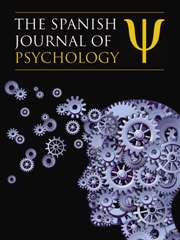Crossref Citations
This article has been cited by the following publications. This list is generated based on data provided by
Crossref.
Zinn, Harry C.
Manfredo, Michael J.
and
Decker, Daniel J.
2008.
Human Conditioning to Wildlife: Steps Toward Theory and Research.
Human Dimensions of Wildlife,
Vol. 13,
Issue. 6,
p.
388.
Woud, Marcella L.
Becker, Eni S.
and
Rinck, Mike
2008.
Implicit evaluation bias induced by approach and avoidance.
Cognition & Emotion,
Vol. 22,
Issue. 6,
p.
1187.
Mitchell, Chris J.
De Houwer, Jan
and
Lovibond, Peter F.
2009.
The propositional nature of human associative learning.
Behavioral and Brain Sciences,
Vol. 32,
Issue. 2,
p.
183.
Olson, Michael A.
Kendrick, Richard V.
and
Fazio, Russell H.
2009.
Implicit learning of evaluative vs. non-evaluative covariations: The role of dimension accessibility.
Journal of Experimental Social Psychology,
Vol. 45,
Issue. 2,
p.
398.
Klucken, T.
Kagerer, S.
Schweckendiek, J.
Tabbert, K.
Vaitl, D.
and
Stark, R.
2009.
Neural, electrodermal and behavioral response patterns in contingency aware and unaware subjects during a picture–picture conditioning paradigm.
Neuroscience,
Vol. 158,
Issue. 2,
p.
721.
Langer, Tina
Walther, Eva
Gawronski, Bertram
and
Blank, Hartmut
2009.
When linking is stronger than thinking: Associative transfer of valence disrupts the emergence of cognitive balance after attitude change.
Journal of Experimental Social Psychology,
Vol. 45,
Issue. 6,
p.
1232.
Pettigrew, Thomas F.
2009.
Secondary Transfer Effect of Contact.
Social Psychology,
Vol. 40,
Issue. 2,
p.
55.
Walther, Eva
Gawronski, Bertram
Blank, Hartmut
and
Langer, Tina
2009.
Changing likes and dislikes through the back door: The US-revaluation effect.
Cognition & Emotion,
Vol. 23,
Issue. 5,
p.
889.
Klucken, Tim
Schweckendiek, Jan
Merz, Christian J.
Tabbert, Katharina
Walter, Bertram
Kagerer, Sabine
Vaitl, Dieter
and
Stark, Rudolf
2009.
Neural Activations of the Acquisition of Conditioned Sexual Arousal: Effects of Contingency Awareness and Sex.
The Journal of Sexual Medicine,
Vol. 6,
Issue. 11,
p.
3071.
Zhang, Hong
and
Chan, Darius K‐S.
2009.
Self‐esteem as a source of evaluative conditioning.
European Journal of Social Psychology,
Vol. 39,
Issue. 6,
p.
1065.
Corneille, O.
Yzerbyt, V.Y.
Pleyers, G.
and
Mussweiler, T.
2009.
Beyond awareness and resources: Evaluative conditioning may be sensitive to processing goals.
Journal of Experimental Social Psychology,
Vol. 45,
Issue. 1,
p.
279.
Rydell, Robert J.
and
Jones, Christopher R.
2009.
Competition Between Unconditioned Stimuli in Attitude Formation: Negative Asymmetry versus Spatio-Temporal Contiguity.
Social Cognition,
Vol. 27,
Issue. 6,
p.
905.
Prestwich, Andrew
Perugini, Marco
Hurling, Robert
and
Richetin, Juliette
2010.
Using the self to change implicit attitudes.
European Journal of Social Psychology,
Vol. 40,
Issue. 1,
p.
61.
Albarracín, Dolores
and
Vargas, Patrick
2010.
Handbook of Social Psychology.
Bar-Anan, Yoav
De Houwer, Jan
and
Nosek, Brian A.
2010.
Evaluative Conditioning and Conscious Knowledge of Contingencies: A Correlational Investigation with Large Samples.
Quarterly Journal of Experimental Psychology,
Vol. 63,
Issue. 12,
p.
2313.
Kuenzel, J.
Zandstra, E.H.
Lion, R.
Blanchette, I.
Thomas, A.
and
El-Deredy, W.
2010.
Conditioning unfamiliar and familiar flavours to specific positive emotions.
Food Quality and Preference,
Vol. 21,
Issue. 8,
p.
1105.
Jones, Christopher R.
Olson, Michael A.
and
Fazio, Russell H.
2010.
Vol. 43,
Issue. ,
p.
205.
Walther, Eva
Weil, Rebecca
and
Langer, Tina
2011.
Why Do We Like the iPhone? The Role of Evaluative Conditioning in Attitude Formation.
Social and Personality Psychology Compass,
Vol. 5,
Issue. 7,
p.
473.
Goubert, Liesbet
Vlaeyen, Johan W.S.
Crombez, Geert
and
Craig, Kenneth D.
2011.
Learning About Pain From Others: An Observational Learning Account.
The Journal of Pain,
Vol. 12,
Issue. 2,
p.
167.
Walther, Eva
Langer, Tina
Weil, Rebecca
and
Komischke, Melina
2011.
Preferences surf on the currents of words: Implicit verb causality influences evaluative conditioning.
European Journal of Social Psychology,
Vol. 41,
Issue. 1,
p.
17.


